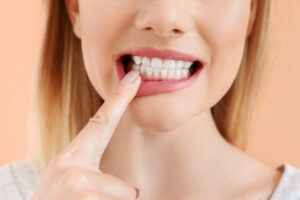Last updated on March 15, 2023
Misaligned, crooked, and overlapping teeth are commons problems and occur due to a variety of reasons. In some cases, a person’s mouth is too small, and the teeth get crowded and shift inside. In other instances, the lower and upper jaws have malformations which result in protrusions that are otherwise known as an underbite or an overbite.
The primary cause of these malformations of the teeth and jawline is genetics, much like how a person inherits the color of his hair or eyes. Other possible causes are premature loss of baby or permanent teeth, improper dental restorations, gum disease, injury and oral health issues caused by teeth grinding, tongue pushing, and thumb sucking. If these issues are not corrected, a person may experience the following:
-
Difficulty with chewing food
-
Teeth may be harder to clean which will increase the risk of getting cavities and gum disease
-
Increased self-consciousness about appearance and loss of confidence
-
Misalignment may add strain to the jaw and teeth which may increase the risk of teeth breaking
Although in most cases, teeth misalignment is evident, there are some instances when you need your dentist to assess whether or not you need to visit an orthodontist Ashburn VA offers for proper diagnosis and treatment.
Tests conducted by an orthodontist
Standard https://beaconsmiles.ca/tests conducted by an orthodontist include X-rays, teeth impressions, and facial photographs. A dental X-ray provides a detailed view of how your teeth are positioned internally and gives the orthodontist a better assessment of your condition. A dental impression, on the other hand, is used by the orthodontist to create a copy of how your teeth are currently aligned.
Treatment for teeth misalignment and bite problems
After completing a diagnosis, the orthodontist will decide the best treatment which will yield the desired result in correcting the teeth misalignment and bite issue. For minor concerns, a removable retainer is sufficient to fix the problem. For example, invisalign or clear braces can stabilize the teeth into the new position. But, for most cases that involve overcrowded and crooked teeth, the orthodontist will require the patient to wear braces for a specific amount of time. For crowded teeth, the orthodontist may undertake tooth extraction to provide space for teeth to move back into place.
Wire braces are considered to be most effective in correcting severe teeth misalignment and bite issues. Despite the many advancements in orthodontic treatment, conventional wire braces are still the most commonly prescribed treatment for teeth alignment issues. In some rare cases of extreme teeth or bite misalignment, an operation may be necessary to correct the problem.
Ongoing advancements in orthodontic treatment such as Invisalign are looking at ways to make the procedure less painful for the patient. Some versions of wire braces make use of ceramic brackets which mimic the appearance of teeth and look less conspicuous when worn. In many ways, orthodontics has grown by leaps and bounds since the earliest known orthodontic treatment became available, which is not only great for practitioners, but also for patients who are seeking treatment.


















Be First to Comment